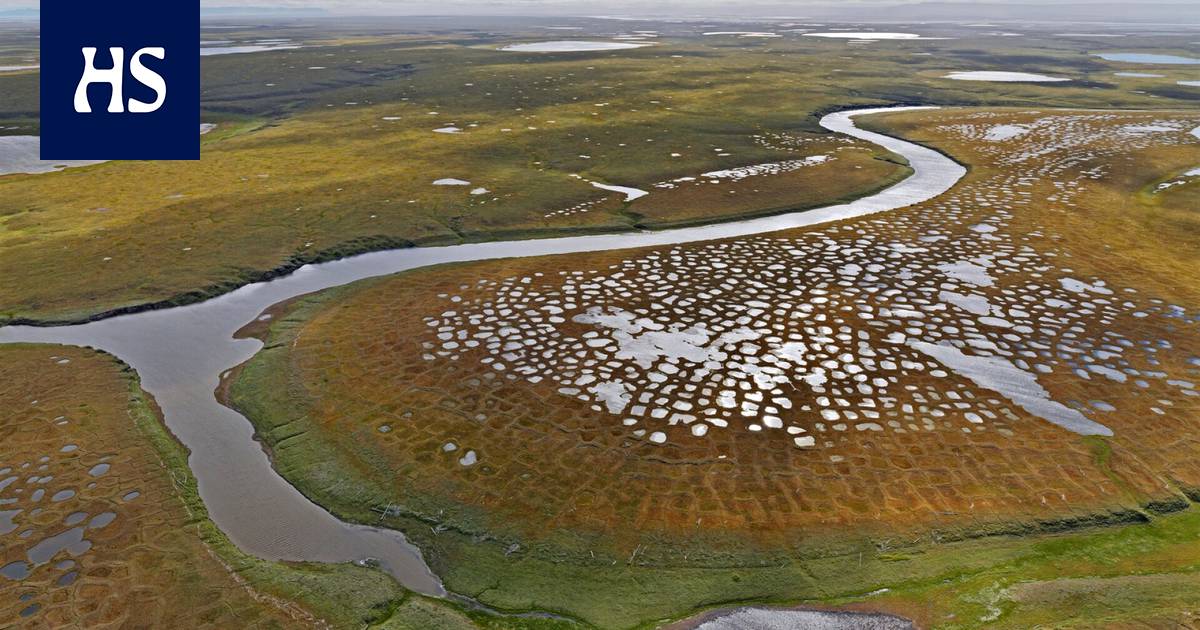The chairman of the Finnish Climate Panel is worried about the melting of the permafrost as the Arctic region warms faster than expected. The effects of warming are slowly creeping into Finland.
12.8. 18:03
Thursday a published Finnish study reports worrying news about climate change: the Arctic region has warmed four times as fast as the Earth on average.
Read more: Finnish study: The Arctic region is warming no less than four times faster than the rest of the globe
Previously, the warming of the Arctic region was thought to be “only” twice the global average.
“A very worrying result,” says the chairman of the Finnish Climate Panel and professor emeritus of the University of Helsinki Markku Ollikainen.
Warming up speed is worth paying attention to for many reasons, but Ollikainen considers one to be the most important.
“Every researcher is afraid of what will happen to the permafrost.”
An estimated 70 billion tons of methane have been stored in the permafrost of the Arctic regions. As the climate warms, it is at risk of being released into the air as permafrost melts.
Methane is a greenhouse gas 28 times stronger than carbon dioxide.
“Along with the disappearance of rainforests like the Amazon, this [ikiroudan sulaminen] is another scary vicious circle,” Ollikainen says.
The director of the Finnish Climate Panel, Markku Ollikainen, is concerned about the warming of the Arctic region.
So far, the permafrost formed in the Arctic regions during the last ice age has remained frozen, but it is also warming. In Siberia, there have been signs of permafrost melting for years.
According to Ollikainen, research results were obtained in 2015, which indicate that the temperature of permafrost is approaching zero degrees Celsius, the melting point of water. The more the climate in arctic regions warms, the deeper the permafrost melts.
Finnish research According to The researchers’ message is that with more detailed information, the current climate models and scenarios also need to be refined.
For example, winters in Northern Europe are expected to warm by 2–7 degrees in the 2060s. Are such estimates now out of date?
“Yes, this information darkens all the assessments made so far. Now we know that we are at the upper limit of the estimation ranges and the lower limit should be raised,” Ollikainen points out.
Arctic the area is limited in the study to the area inside the northern polar circle. In Finland, the border runs at Rovaniemi.
The effects of Arctic warming are not limited to the melting of permafrost and sea ice far away at the poles.
According to the Finnish Meteorological Institute, Finland’s annual average temperature has risen by 0.2–0.4 degrees per decade over the past 40 years.
in Finland global warming can be seen in, among other things, changes in natural species, floods, a decrease in snowy days, and eutrophication caused by rising water temperatures. Extreme weather events such as heavy rains, droughts and storms are increasing. Agriculture and the livelihoods of the indigenous population are in a particularly vulnerable position.
However, Finland is protected by its geographical location under the protection of the Skandians. On the other hand, the uplift of land on the coasts caused by the ice age fights against the rise of the sea level.
According to Ollikainen, nothing “super dramatic” is planned. The insidious change happens gradually.
“It comes in the elevator and everywhere.”
#Environment #Arctic #region #warming #faster #expected #threatens #trigger #vicious #cycle #climate #change









